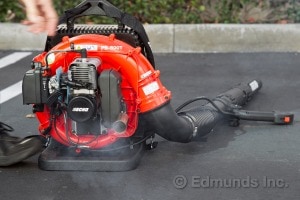Edmunds dealer partner, Bayway Leasing, is now offering transparent lease deals via these forums. Click here to see the latest vehicles!
Emissions Test: Car vs. Truck vs. Leaf Blower
 Edmunds.com
Member, Administrator, Moderator Posts: 10,315
Edmunds.com
Member, Administrator, Moderator Posts: 10,315
 Emissions Test: Car vs. Truck vs. Leaf Blower
Emissions Test: Car vs. Truck vs. Leaf Blower
Edmunds.com conducts an Emissions Test of the 2011 Ford F-150 SVT Raptor Crew Cab, 2012 Fiat 500 and Leaf Blowers.
0

Comments
This also shows that the classical gardener crew could get the job done with electric blowers that are being powered by an inverter running off the car battery, and/or by batteries charged by same.
In most cases though: manual raking is just as fast!
The article is from 2014, and nothing has happened....!!!! Sad!
Note:
“It's only in the production of carbon dioxide (CO2) — not yet directly regulated by EPA or CARB — where the Raptor is the higher emitter.“
Well, the „only“ part here is widely misleading! How much gas was used by the various test subjects?
That equates directly to CO2 output.
Which is extremely relevant too. Don’t walk away from this article thinking that it’s just fine to drive huge trucks!
Just don’t use leaf blowers....